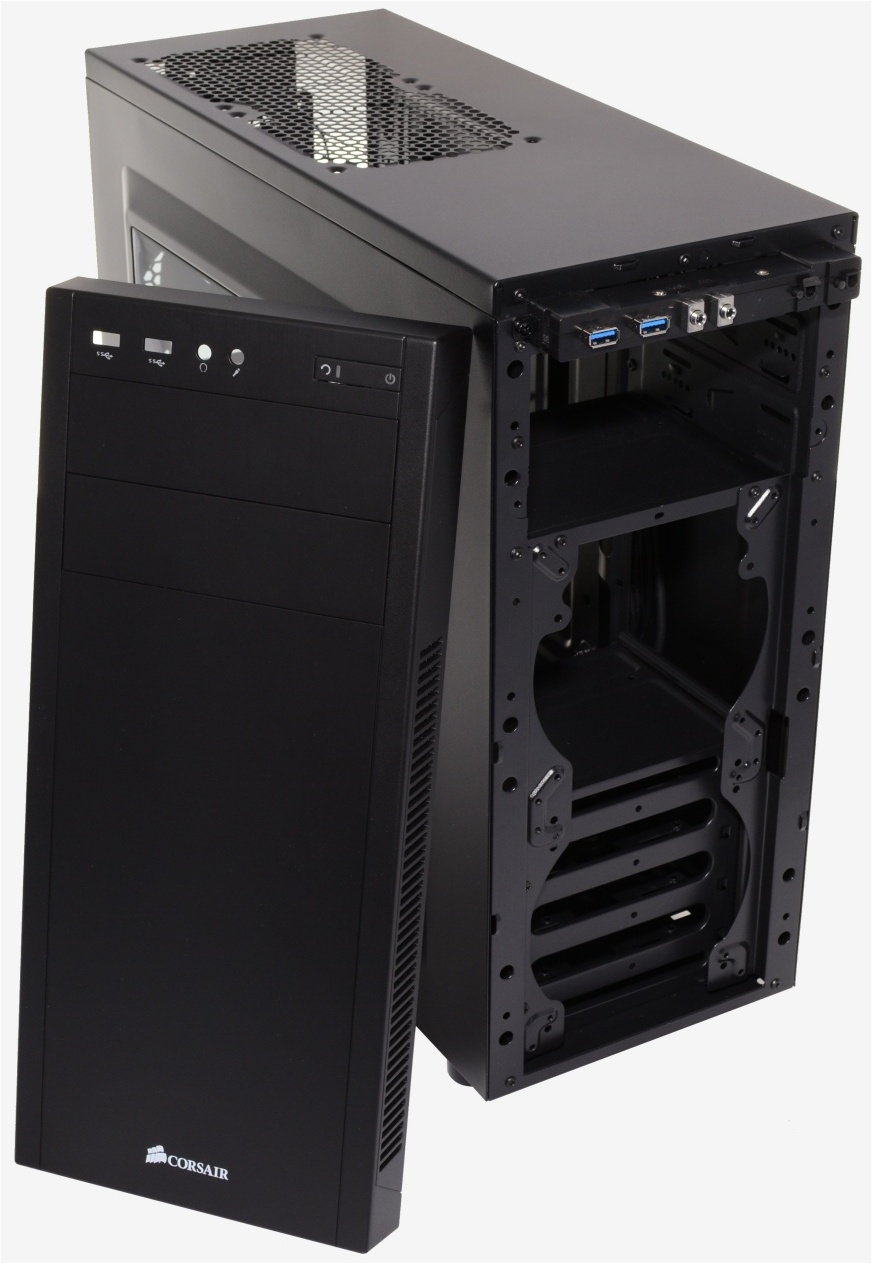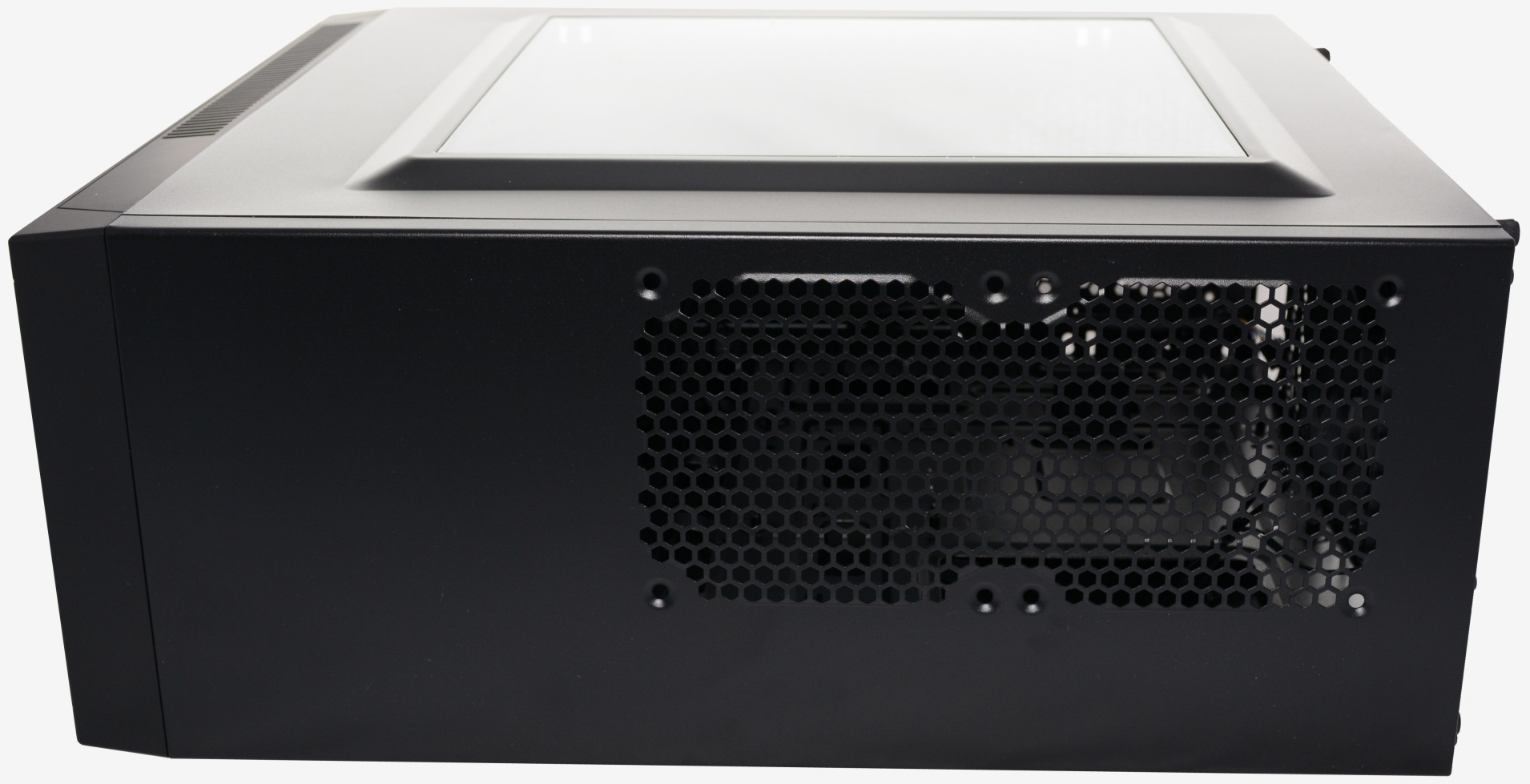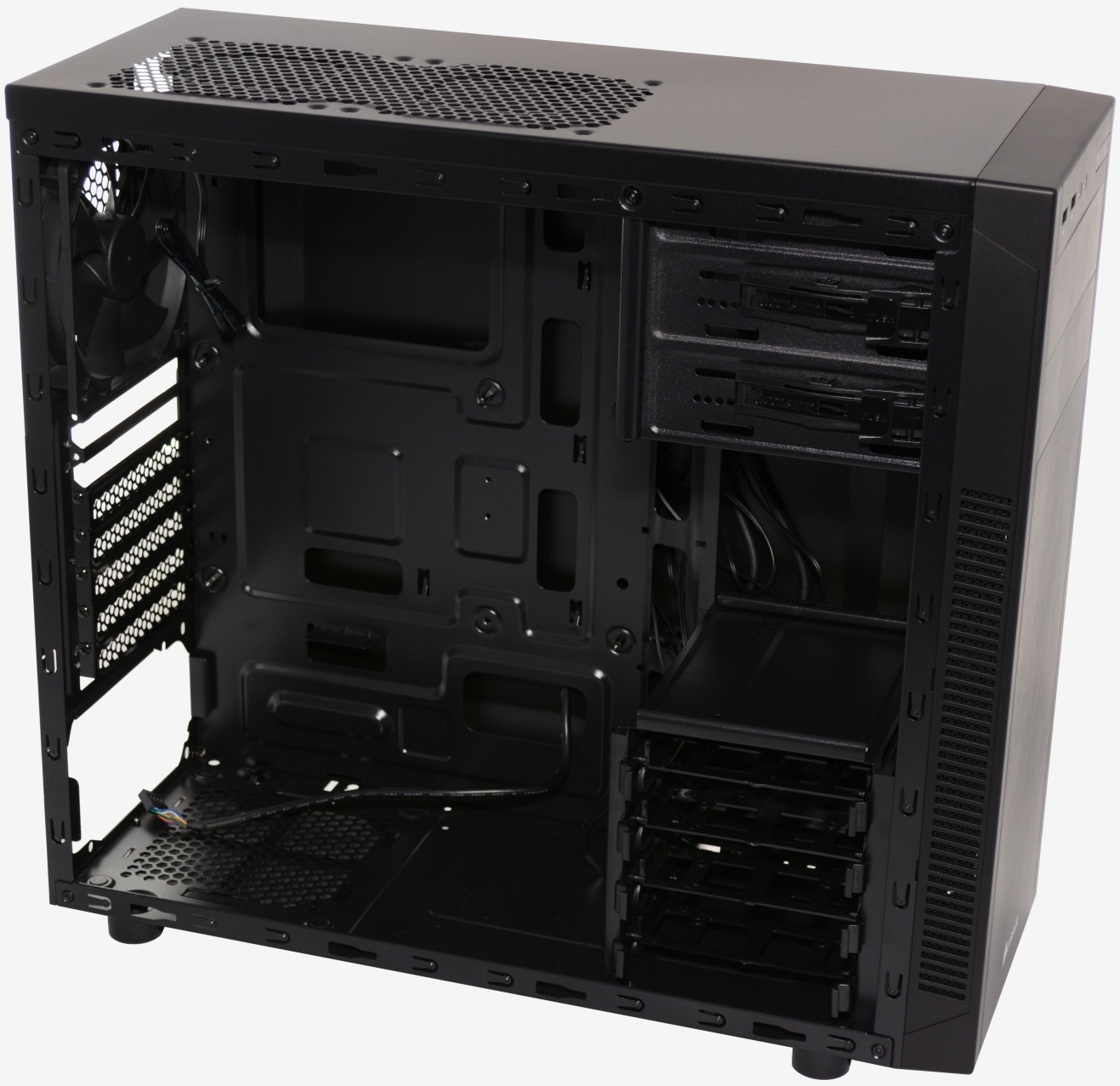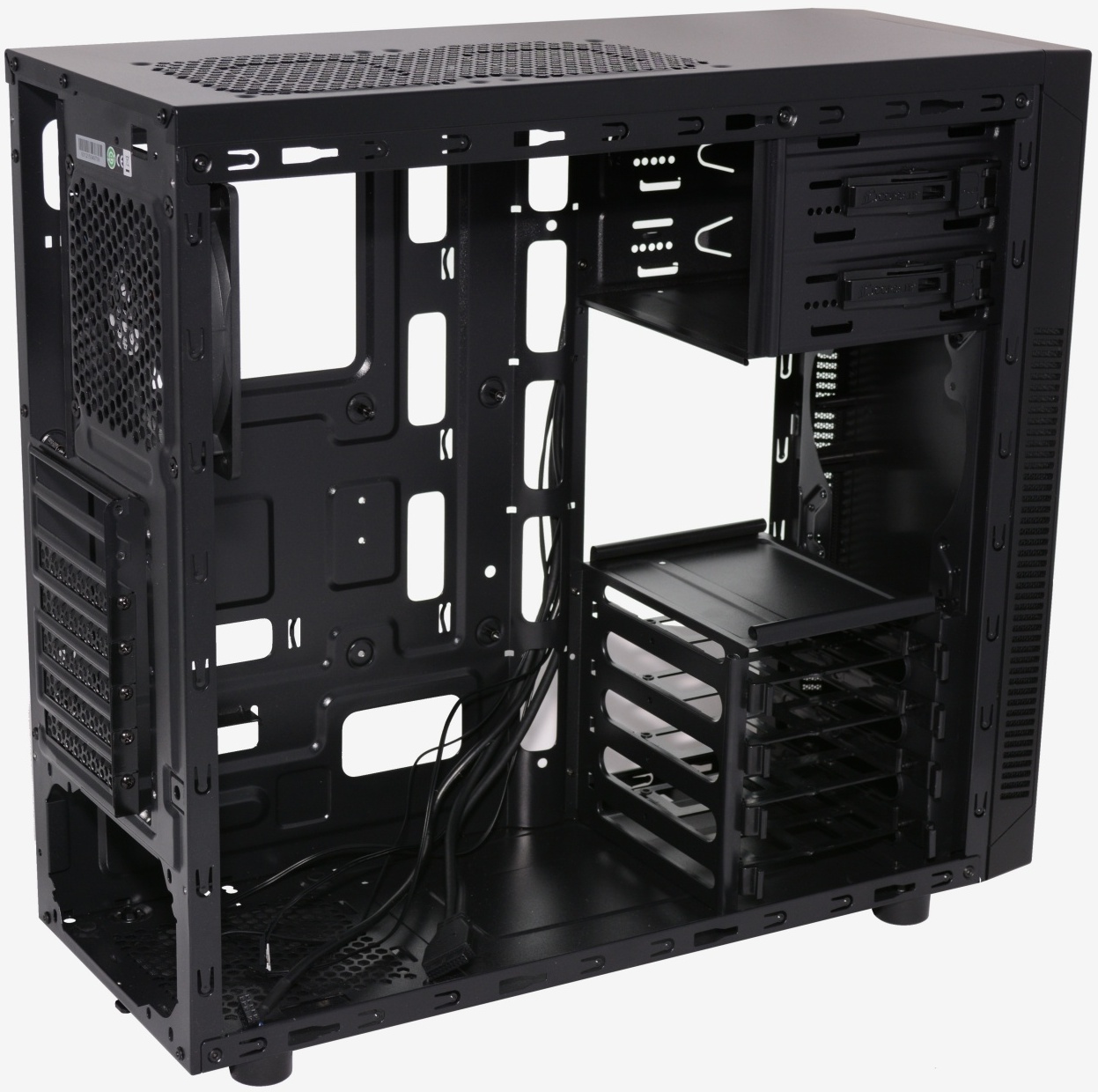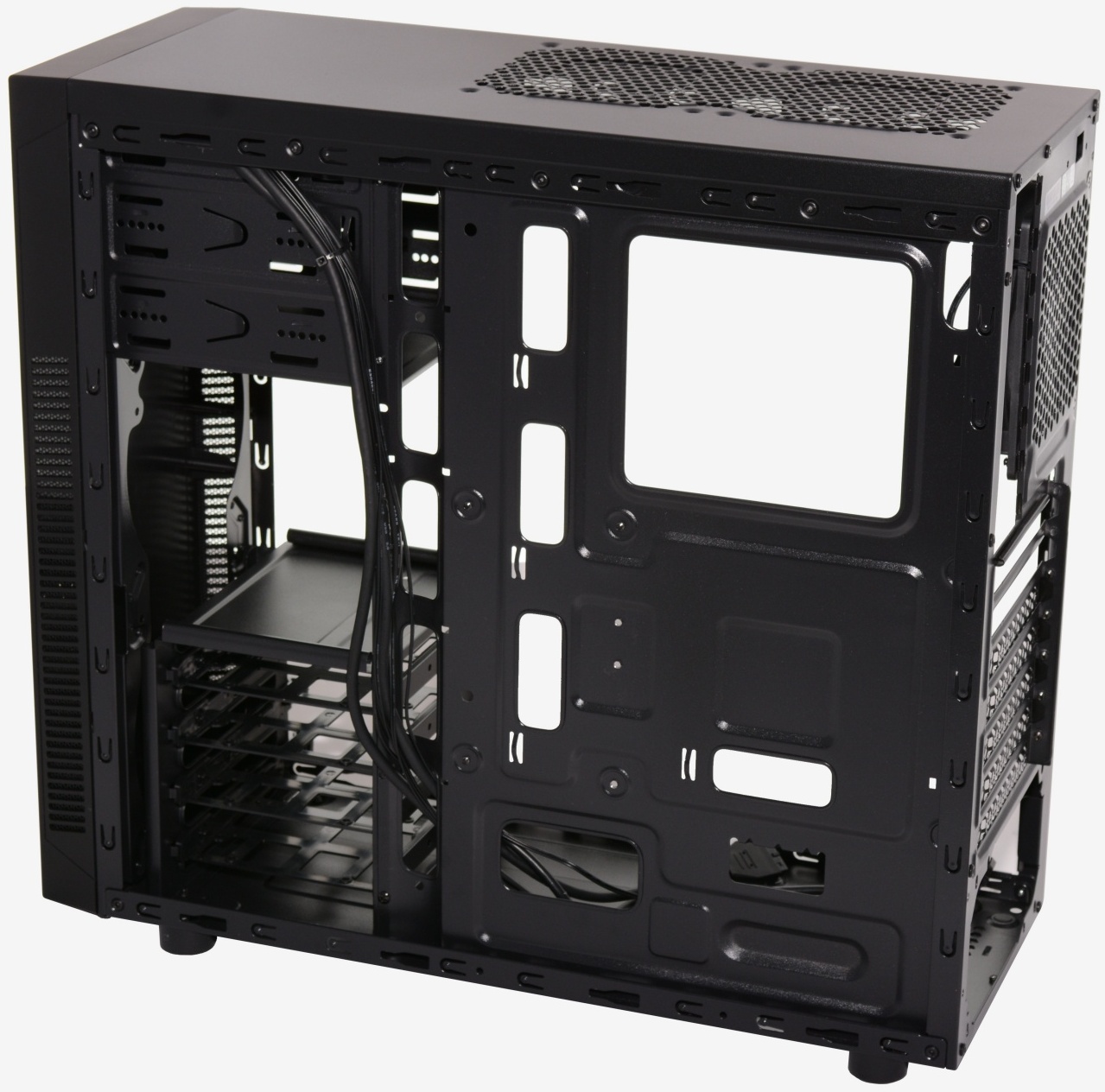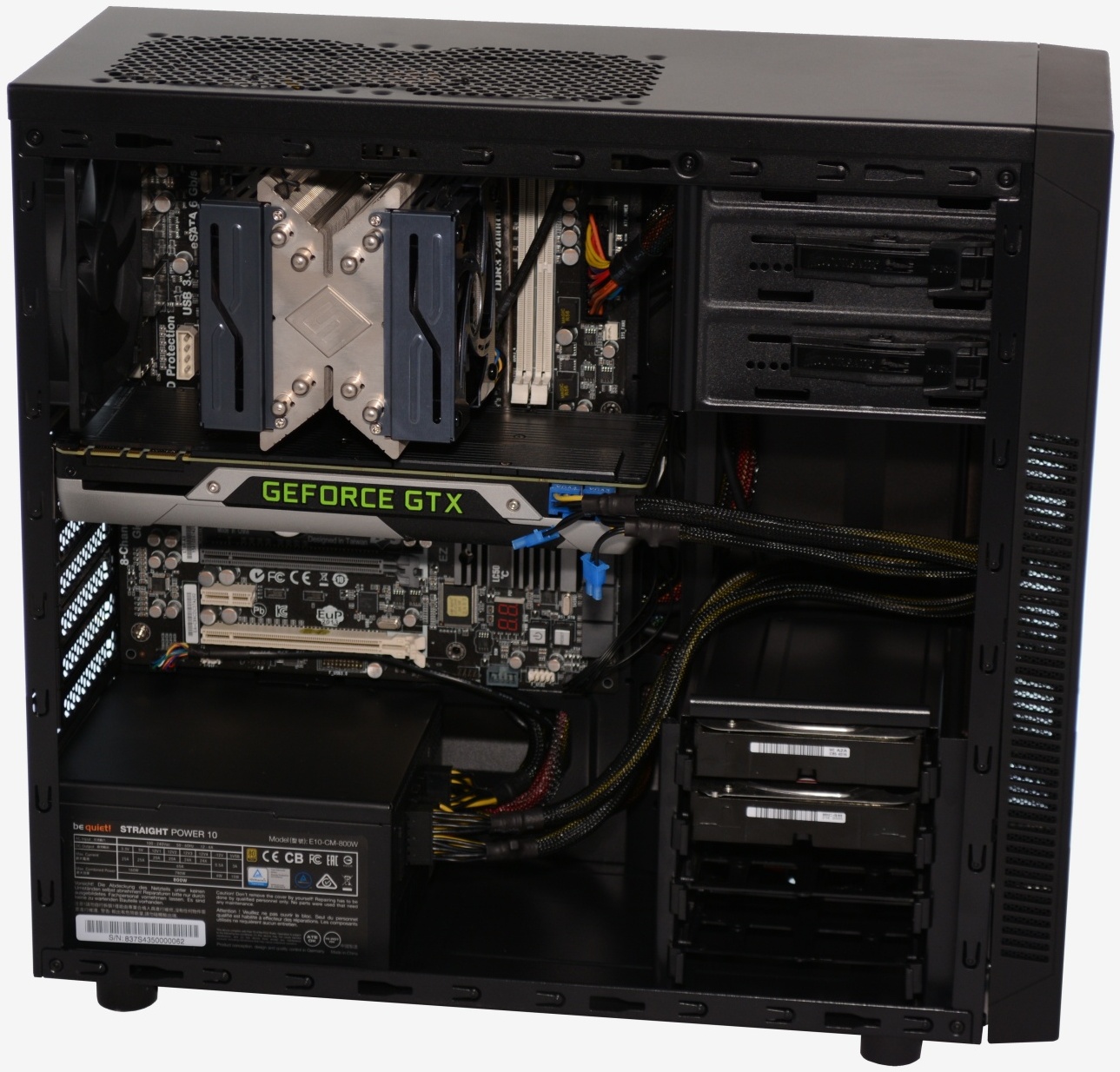Corsair Carbide 100R
The Carbide 100R mid-tower measures 471mm long, 200mm wide and 430mm tall while tipping the scales at a featherweight 4.8kg. Despite the mere 40L capacity, which makes it 23% smaller than the Silverstone Kublai KL05, the 100R still supports ATX motherboards.
Surprisingly, despite weighing very little, most of the case has been constructed from steel. Only the facade and window are made of plastic. The key to the lightweight design is the compact size, and once we get inside the 100R you'll see there aren't many steel accessories to be found.
The Carbide 100R is available exclusively in black with or without a case window. For review we have the case window model which is known simply as the 100R. The other version has been designed for silence and features padded side panels and a three-step fan controller making it the 100R Silent Edition.
Although the design appears simple, it's far from boring. The dark matte paint job gives it a stealthy look that will appeal to those after a more subtle design, while the case window could be outfitted with aftermarket lighting for a bolder look.
The front bezel looks slick and while there are visible I/O connectors, they do not spoil the design. At the top, you will find a pair of audio jacks, two USB 3.0 ports along with a small power and reset button.
Considering its sleek aesthetics, there is no real defining characteristic on the front of the 100R. Besides the two 5.25" external drive bays and the I/O panel there isn't much else to speak of. The front panel is a single piece of plastic which can be removed to access the intake fans should you install some. Note that there is no dust filter, though the vents in the plastic panel do feature a fine mesh which will act as a bit of a filter.
The top of the case dons a large grill that can support a pair of optional 120mm fans. Unfortunately due to limited space there isn't enough room to mount a radiator here.
Both case doors are secured with thumbscrews while the left one features a window so you can display your hardware.
Turning the 100R on its side reveals a small filter that is designed to stop the power supply from collecting dust from the floor, while also preventing debris from slipping into the case. Corsair has also included four large feet that raise the 100R an inch from the ground, allowing for plenty of airflow under the case.
Around back the 100R looks much like any other ATX case, though we should point out that the matte black paint job is also continued around to the rear. Up top is the motherboard I/O panel and opposite that is a preinstalled 120mm fan behind a honeycomb grill.
The 100R sports seven expansion slots and the screws for securing expansion cards are on the outside of the case. Meanwhile, the power supply bracket is at the bottom of the case – the norm these days. The small rectangular hole in the top right corner is for a fan controller that comes with the Silent Edition model.
Inside the 100R is simple yet functional and as you would expect from Corsair everything is black. The fan cables are black, the I/O cables are black, the fan is black and the internal paint job is – go figure – matte black.
Using an intelligent tool-less design, the 5.25" drive bays offer an ultra-quick and reliable way to install and remove devices. The 3.5" drive cage supports four drives and features quick release cradles that support both 3.5" and 2.5" drives.
There is a 125mm x 110mm rectangular hole in the motherboard tray located where the CPU would be positioned, offering easy heatsink installations and removals. Additionally, there are a number of cut-outs in the motherboard tray for easy cable management and thanks to the case door design there is 15mm of room to hide cables behind the motherboard tray.
The 100R offers a great deal of support for expansion considering its size with room for four 3.5" or 2.5" drives, two 5.25" devices, and seven PCI expansion slots.
Corsair has also made sure there is plenty of room for users wanting to install Crossfire or SLI graphics cards with a maximum GPU length of 414mm (275mm for the lower slots that are in-line with the hard drive cage). Conversely, the maximum CPU cooler height is quite limited at 150mm, though for a case this size there are plenty of ways to upgrade cooling with room for two 120/140mm in-take fans and two top mounted 120mm exhaust fans.
The 100R has been designed with the intention of installing the power supply at the bottom of the case and Corsair has provided more than enough room to install PSUs upwards of 1000W with 230mm of headroom.
Corsair Carbide 100R Installation
Unsurprisingly, we didn't encounter any major problems with the Carbide 100R's design during installation. Despite being much smaller than the Silverstone Kublai KL05, we still went with the full size X79 motherboard which was a bit of a squeeze. The 165mm tall Thermalright Silver Arrow SB-E Extreme was ditched for the more height appropriate Asus Triton 81, which was the only tower style heatsink we had on hand that would fit as it is just 145mm tall.
There is a limited range of tower coolers measuring 150mm or less. Some of the better examples that we could find included the Cooler Master Hyper D92 (146.4mm) and Silverstone Argon AR02 (134mm) – both use smaller 92mm fans. Virtually all tower heatsinks sporting a 120mm fan or larger won't fit.
Perhaps the most suitable solutions for the 100R are top-flow coolers such as the Noctua NH-C14. That particular cooler manages to accommodate a pair of 140mm fans while standing just 130mm tall.
Selecting the right graphics card wasn't a problem. Users will have no issue slotting a full length graphics card into the primary PCIe slot.
The DVD-RW slipped in effortlessly thanks to the 100R's tool-free 5.25" system. Installing the 3.5" hard drives was just as easy with the tool-less drive cages, though folks wanting to install an SSD or two will have to secure them to the drive cages using screws.
As was the situation with Silverstone's Kublai KL05, the hard drives are mounted long ways with the power and data cables connecting from the right side. Also like the KL05, the 100R is just 200mm wide and yet while the cables fit nicely behind the door on Silverstone's case this wasn't so with the 100R. The power cable stuck out a little too far which made reattaching the right door panel more difficult than it should have been.
Installing the power supply was simple using the bottom mounting position and there was still a load of room to accommodate an even bigger power supply, such as the Thermaltake Toughpower 1500W.
Finally, we connected up the single 120mm exhaust fan and then put the left door panel with the window back on.





